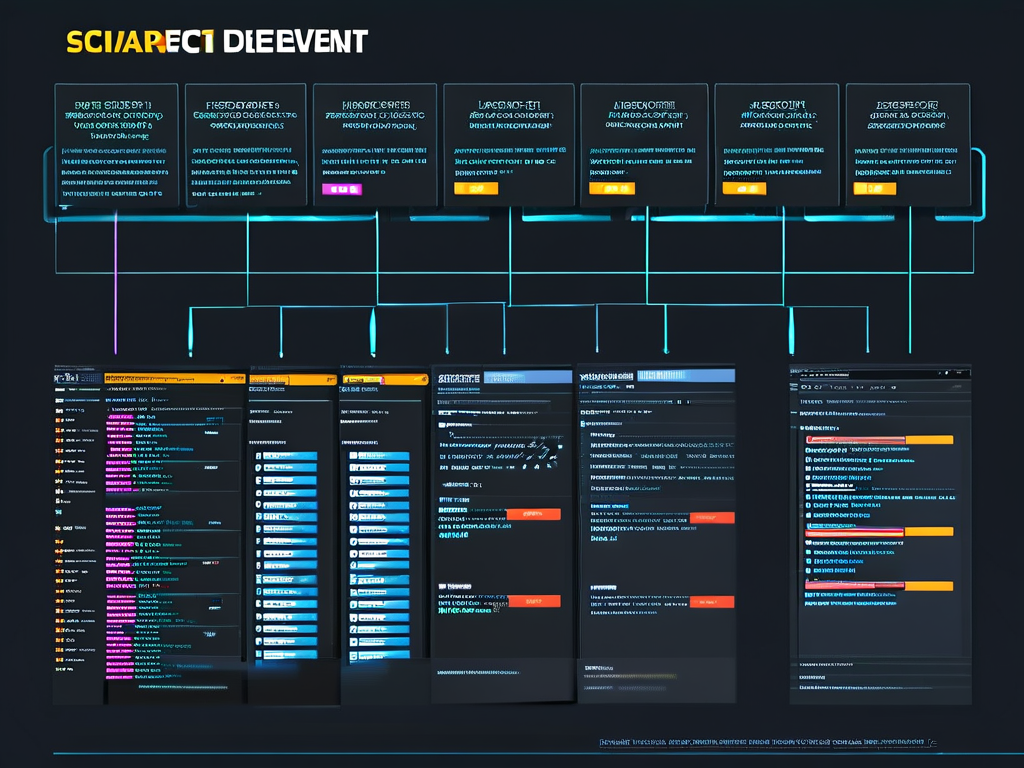In today's digital-first business environment, developing a robust database for enterprise websites requires meticulous planning and execution. This guide explores the essential phases of database development while highlighting practical strategies to ensure optimal performance and security.

Understanding Business Requirements
Every successful database project begins with thorough requirement analysis. Developers must collaborate with stakeholders to document data types, user permissions, reporting needs, and integration requirements with existing systems like CRM or ERP platforms. For instance, an e-commerce site might need product inventory tables linked to real-time order processing systems, while a B2B portal may prioritize client management modules.
Database Architecture Design
The logical design phase involves creating entity-relationship diagrams (ERDs) to visualize tables, fields, and relationships. Developers must decide between relational (SQL) and non-relational (NoSQL) structures based on data complexity. Consider this SQL snippet for user management:
CREATE TABLE Users (
UserID INT PRIMARY KEY,
Username VARCHAR(50) UNIQUE,
HashedPassword CHAR(60),
LastLogin DATETIME
);
Physical design considerations include storage allocation, indexing strategies, and backup protocols. For high-traffic websites, implementing sharding or replication during this stage can prevent future scalability issues.
Development and Implementation
Using tools like MySQL Workbench or MongoDB Atlas, developers convert designs into functional databases. This phase includes:
- Writing optimized queries with proper joins
- Implementing stored procedures for frequent operations
- Configuring automatic backups
- Setting up encryption for sensitive fields
A common mistake is overlooking data validation rules. Always include constraints at the database level rather than relying solely on frontend validation.
Testing and Optimization
Rigorous testing ensures data integrity and performance. Conduct:
- Load testing with simulated user traffic
- SQL injection vulnerability checks
- Cross-browser/device compatibility tests
- Index efficiency analysis using EXPLAIN statements
Performance tuning might involve query caching or migrating column-based storage for analytics-heavy applications.
Deployment and Maintenance
Migrate the database using controlled rollout strategies like blue-green deployments. Post-launch monitoring tools like Prometheus or New Relic help track query response times and error rates. Schedule regular maintenance tasks:
- Index rebuilds
- Statistics updates
- Security patch applications
Security Considerations
Implement role-based access control (RBAC) through GRANT/REVOKE statements. For PCI-DSS compliant systems, ensure credit card data storage follows AES-256 encryption standards. Regular audits and penetration testing should be mandatory.
Integration with Web Applications
Establish secure connections using prepared statements to prevent SQL injection. For Node.js applications, a MySQL connection pool might look like:
const pool = mysql.createPool({
host: 'dbserver.example.com',
user: 'app_user',
password: process.env.DB_PASSWORD,
database: 'enterprise_portal',
connectionLimit: 20
});
Continuous Improvement
Analyze query logs quarterly to identify optimization opportunities. As business needs evolve, plan schema modifications during off-peak hours using ALTER TABLE commands with minimal downtime.
By following this structured approach, organizations can build databases that not only meet current operational demands but also adapt to future technological shifts. Remember, a well-designed database serves as the foundation for user satisfaction, operational efficiency, and long-term business growth.









